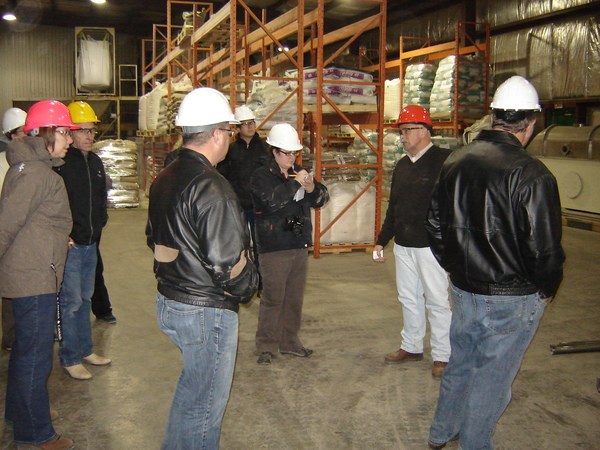Estimated to be valued at $1.6 billion annually, the livestock feed industry in Saskatchewan is an important part of the province's economy.
The University of Saskatchewan is hoping to have a positive impact on the feed industry with its new $13.3 million Canadian Feed Research Centre, slated to be up and running by this time next year.
"It's the type of thing that will potentially change the industry," said Tom Scott, associate professor for the University of Saskatchewan's department of animal and poultry science.
Scott is also the research chair in Feed Processing Technology and will be heading the new research facility.
The research facility will be in North Battleford, housed in a section of a commercial feed mill owned by the University of Saskatchewan, but licensed to and maintained by Cargill. The research facility will feature what is basically a miniaturized version of the commercial line, designed to allow a much higher precision in the research of processing conditions and effects.
"We'll have better control over what's going in and the exact temperatures and time of conditioning," said Scott.
Animal feed is primarily derived from crops unsuitable for direct human consumption, whether it's because the grains have sprouted, been frozen or otherwise damaged, and in recent years, from byproducts of biofuel production.
From these raw materials to the finished animal feed product, there are a number of processes, which, if altered, can have an effect on the available nutrients.
"If they're not available, they go straight through the animal," explained Scott.
One of these processes is extrusion, where the feed is pressed into pellets with a combination of heat, moisture and pressure. As an interesting side note, this is also the process used to make the popular snack food, Cheezies.
After the starch has been converted to ethanol in the production of biofuel, the leftover grain material typically goes through the animal feed industry as a protein source.
"The leftover material tends to be of low quality," said Scott. "If you ate that, you wouldn't get very many nutrients out of that."
However, by altering the three components of extrusion - heat, moisture and pressure - more of those nutrients can be recovered by the animal, which translates into a higher quality food product, whether meat, milk or eggs, for humans.
"You can increase the available amino acids by 20 per cent," said Scott, explaining amino acids are the building blocks of protein.
Increasing available energy and nutrients is just one component of the animal feed industry, however.
"We're also processing feed to destroy food pathogens like salmonella so humans don't get food poisoning," said Scott, adding, "It's part of controlling food-borne illness from what they call the farm to the fork."
Some of those initiatives include manufacturing natural antibodies or vaccines to add to the feed. But this process presents a challenge, as the antibodies need to be protected so they are not simply digested before they get to the active site in the animal's gut.
Ways of testing these additions include a process called in ovo, which is Latin for "in egg." This is how chickens are vaccinated for certain diseases, and involves injecting the vaccine into the fluid around the embryo, which the chick drinks just before hatching. Since the stomach is not fully functional at this point, and lacks gut bacteria, the vaccine doesn't risk being digested, and it's effectiveness can be tested.
"Oral vaccine delivery has been researched for many years, it would provide an easy and economical way of vaccinating large numbers of animals without handling or damaging them with injections," said Scott.
Previously, much research was limited by the systems already in place in feed mills, where only the input and end product could be observed.
But with a complete miniature mill, each and every step of the process can be micromanaged and altered.
"All the work I've done in the past has always been limited by the capacity to apply controlled feed processing," said Scott.
Scott also hopes to acquire a seed sorter in the future, and is in the process of acquiring funds for what he said will be "the first machine of its kind in North America."
The seed sorter examines each individual seed with near infrared spectrometry, and can be set to sort for variables such as protein, starch, moisture and hardness.
It can also test for fusarium, a mycotoxin that can be produced by moldy seeds.
"Fusarium can cause some serious illnesses in animals and people," said Scott.
The machine is capable of sorting three tons per hour. Up to ten machines can be linked together, for a total sorting speed of 30,000 seeds per second.
Overall, Scott said the research conducted at the centre will increase feed value and safety. With respect to export markets, he hopes this will increase demand for finished product as opposed to raw materials, saying, "Typically you make more money for your local industry if you do the processing here rather than ship raw ingredients."
The Canadian Feed Research Centre is funded through a federal program, Canada Foundation for Innovation, the provincial government and industry and private donations.




